I should advise readers with a sensitive nature who appreciate precision engineering that this hack involves Blu Tack…
If you’ve got a dodgy or non-working Nikon L35AF 35mm compact film camera lying around, or are willing to buy one, you might be prepared to throw caution to the winds and destroy it in the name of experimentation. It could give you an interesting and inexpensive lens on Sony E mount digital cameras, but with the right adapter might work for others such as Fujifilm X-mount, Canon EF-M mount, Sony FZ mount, Leica SL mount and Micro Four Thirds.
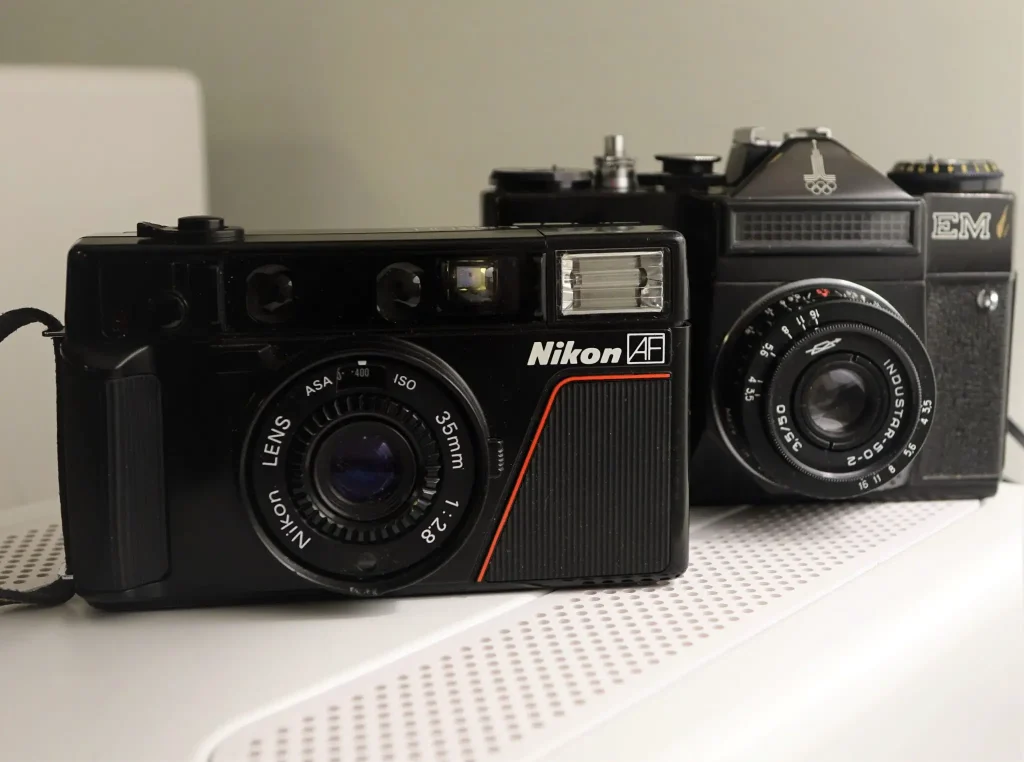
In the 1980s Nikon went to some trouble in creating the L35AF, their first auto-focus compact camera, and there’s a page on Nikon’s own website which explains the expertise they put into the lens design.
They succeeded in producing an excellent compact. The merits of the ‘Pikaichi’ – meaning ‘top notch’ – have featured here on 35mmc more than once and it has achieved a certain cult status for good reason. The 35mm f/2.8 Sonnar lens is very respected and I’m certainly not the only one to have been inspired to rip it out and use it on another camera.
In my case, I happened to have a Nikon L35AF which was worth sacrificing on the altar of lens hacking because the autofocus on it had failed. I had the camera ready for surgery, but I needed to transfer the optics into a suitable lens body without removing the donor lens body iris blades, and which could be mounted on a Sony E mount camera as I own a NEX-5n. There will be a crop factor and on the Sony NEX-5n I’m using it will be around 1.5, so it will become a 50mm normal lens or thereabouts.
Ideally, the flange focal distance from the surface of the rear element of the hacked lens to the NEX-5n sensor should be the same as it was from the rear element of the lens to the film plane on the original Nikon L35AF. The Sony E-mount flange focal distance is 18mm, and here’s a list of the flange distances for other mounts:
Fujifilm X-mount 17.70 mm
Canon EF-M-mount 18.00 mm
Sony FZ-mount 18.00 mm
Leica SL-mount 19.00 mm
Micro Four Thirds 19.25 mm
I measured the flange focal distance on the Nikon L35AF to be 27mm but please don’t trust me on that, check it yourself. I already had a potential candidate for the lens body: the M42 mount Industar 50-2 is sometimes found attached to Russian Zenit SLR cameras from the 1970s and they produced masses of these mechanically quite simple pancake lenses, so one can be acquired today for very little outlay.
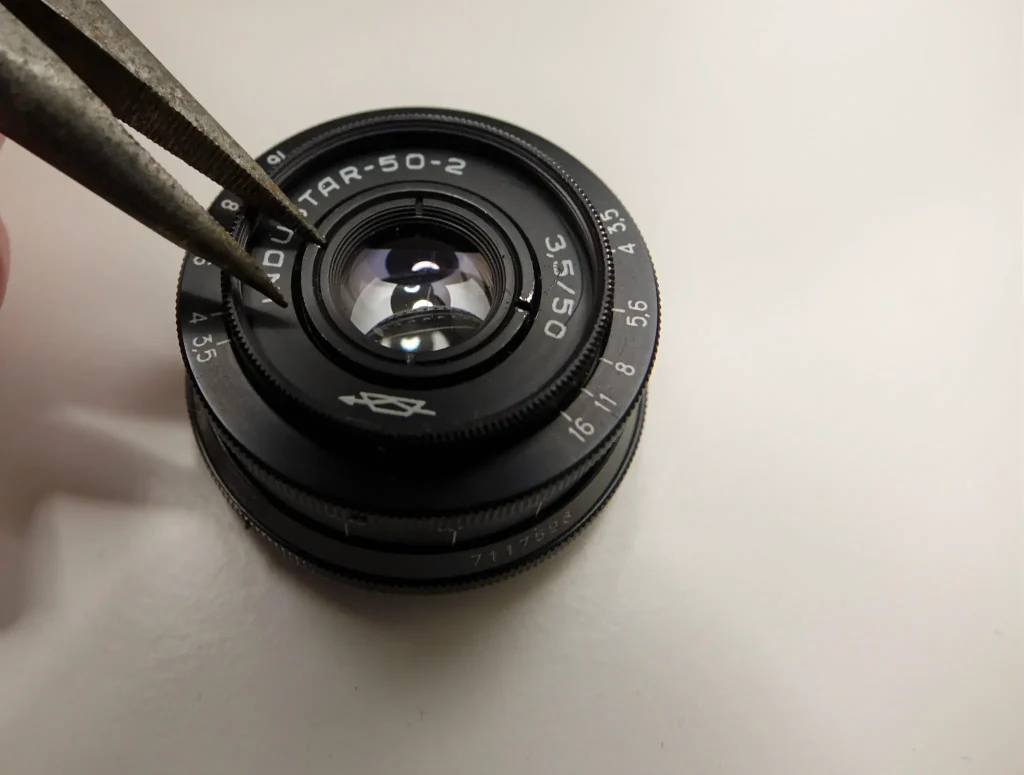
I mentioned above that others have hacked the L35AF lens, including of course Hamish here at 35mmc, and another person who has used a similar lens body is Filmosaur who hacked an Industar I-50 50/3.5 collapsible LTM lens and fitted the Nikon optics in for mounting on his Leica IIIc 35mm rangefinder. You can read about it here.
My plan was that the optics capsule I was going to liberate from the Nikon camera would sit at the front of the lens with the aperture blades behind, leaving no glass between iris and mount. I could see that the Nikon lens was just slightly smaller than the space in the Industar, once the glass was removed.

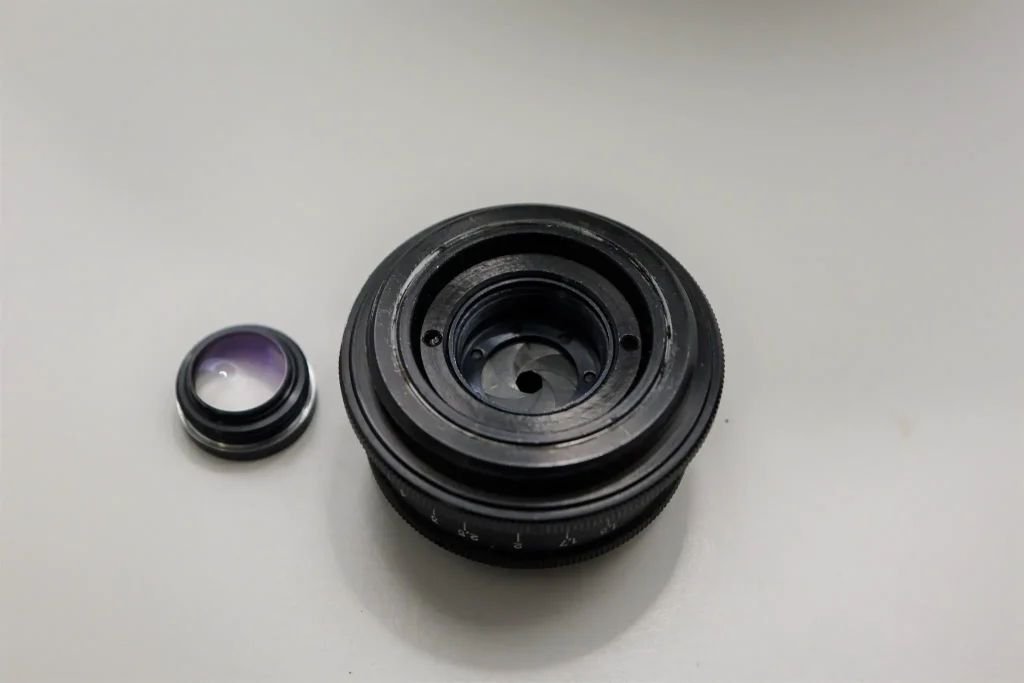
Removing the two Industar lens group assemblies from either side of the central aperture blades was the work of a moment as you just unscrew them. Once done, there’s an empty gap of around 12mm from iris to mount and, fortuitously, when this 12mm is added to the Sony E mount flange distance of 18mm, you have 30mm which is only slightly longer than the 27mm I measured on the original Nikon L35AF camera. I know tiny measurements can make a difference in respect of focus but I was willing to go ahead with it anyway and accept the possibility that I might not achieve infinity focus.
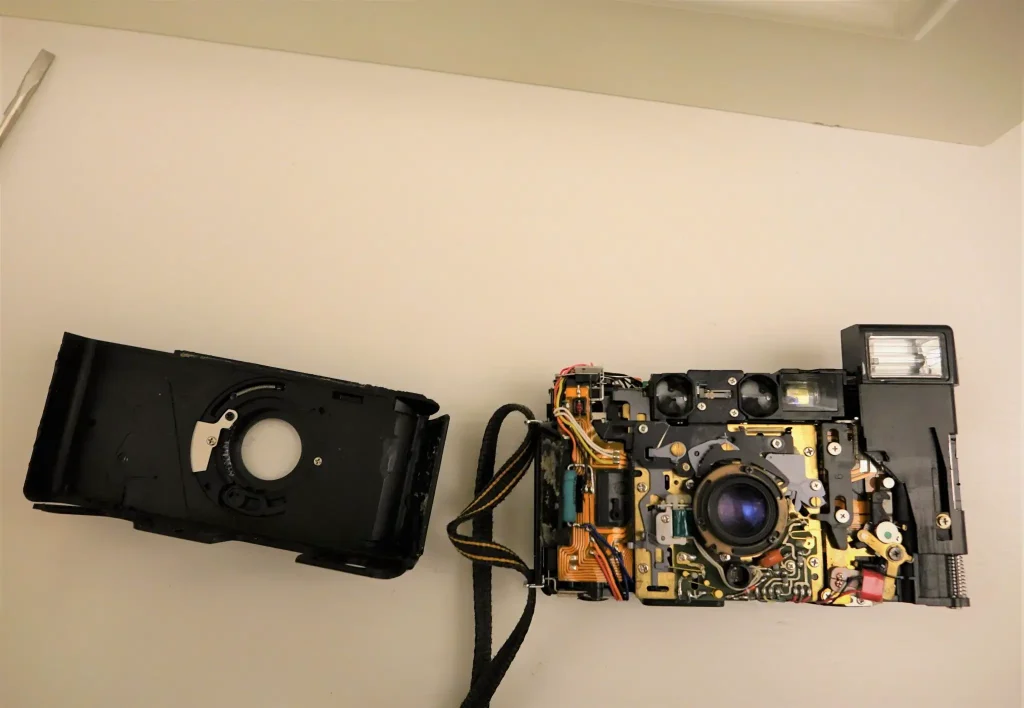
Prising away the front of the Nikon L35AF camera without the whole thing exploding into fragments was a bit of a struggle as it was reluctant to come off, but I managed it without damaging the lens. I was aware of the danger from the flash unit capacitor which even in abandoned cameras can still hold a powerful charge, so obviously take care when taking cameras apart that have them.
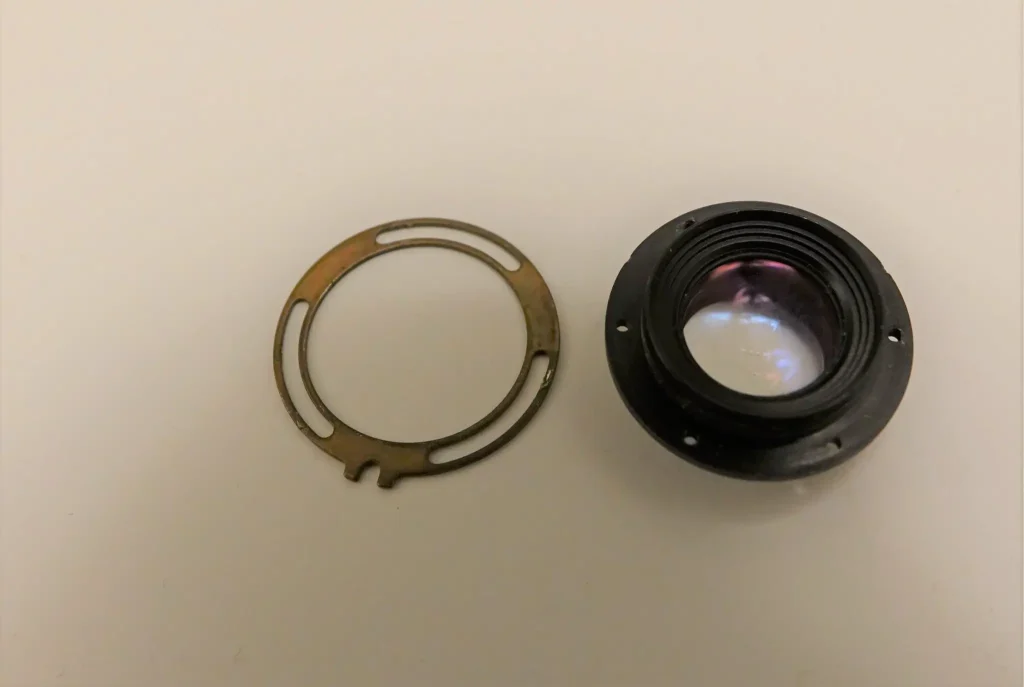
The lens optics are housed in a small capsule with a wide plastic collar around it. I removed a brass fitting and cut the collar away with a scalpel blade so that the lens capsule would fit in the Industar. At one point during vigorous cutting all the lens elements suddenly shot out onto the carpet. Disaster. I scrabbled about and managed to find the tiny elements which also had minuscule and separate black spacers. Fortunately, I could refer to the cross section diagram in the Nikon lens article above to reassemble them and also took the opportunity to give them a clean. Catastrophe narrowly averted.
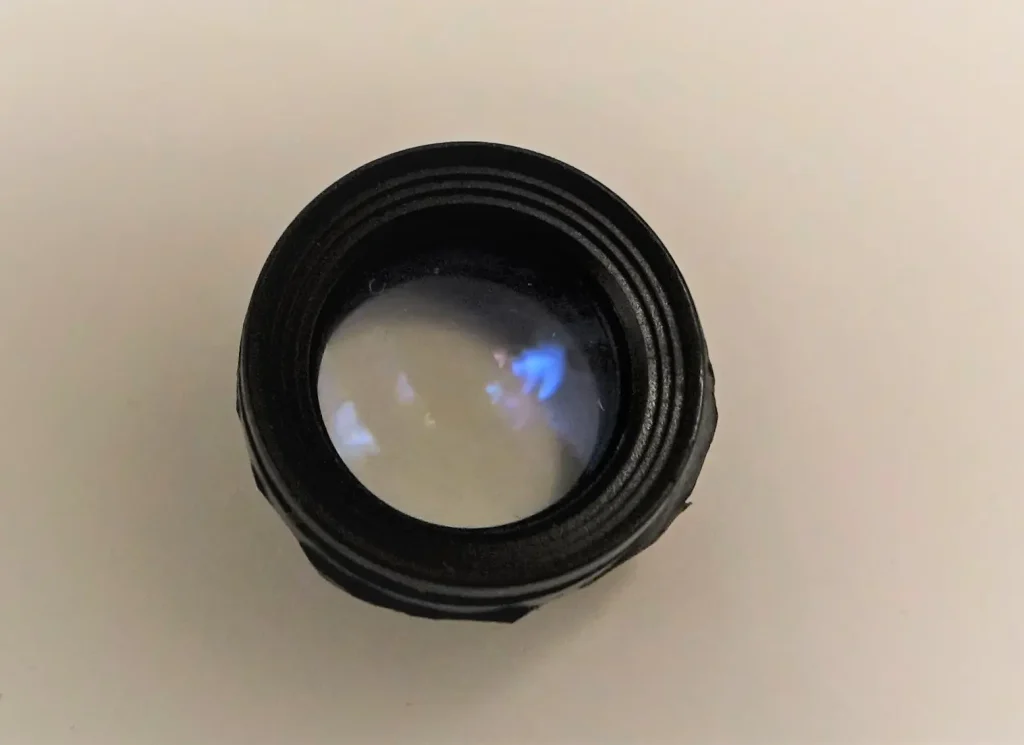
The next step was to insert the optics into the Industar. It wasn’t possible to screw them in as there’s no thread on the Nikon lens so I had to come up with a quick and easy solution. For those with expectations of satisfactory lens construction please look away now.
I created a sort of malleable ring from Blu Tack which, if you are not familiar with the name, is a pale blue putty often used to stick notices and posters to walls. I gently squashed the Nikon lens capsule into the space so that the rear element was almost touching the aperture blades. This method means there’s a risk that the lens will be off-centre and not level, and I had to adjust it by eye. I suspect some of the photos I subsequently took show some focal plane weirdness going on because the lens was nudged slightly out of alignment.
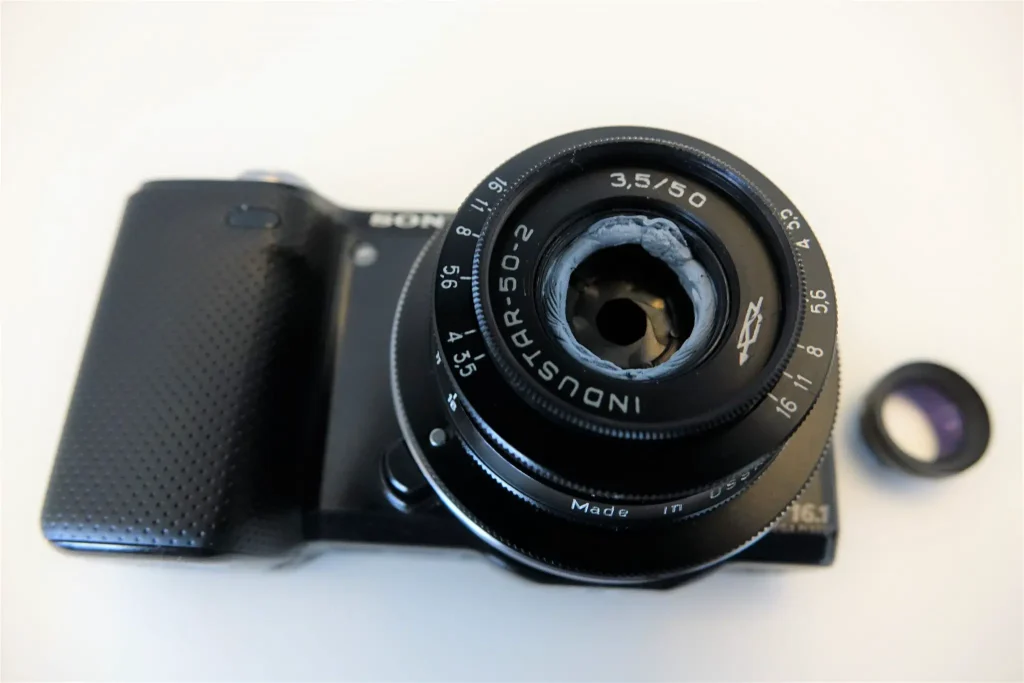
To mount this new combination to my Nex-5n I bought a very cheap adapter on ebay which enables an M42 lens to fit onto Sony E mount cameras. It’s very slim, and needs to be as any extra millimetres would compromise the flange focal distance I was trying to minimise. The focusing ring still worked and after adjusting the camera to the ‘release shutter without lens’ setting I was ready to go.
What sort of subject should I test this odd new lens on? You will be thankful I have avoided shots of brick walls, although to be fair they do have their place. I thought a more useful challenge for the lens and NEX 5n camera would be to try and produce some half-reasonable images of the exterior and interior of a night-time Blenheim Palace. I hope they give an indication of what’s possible.
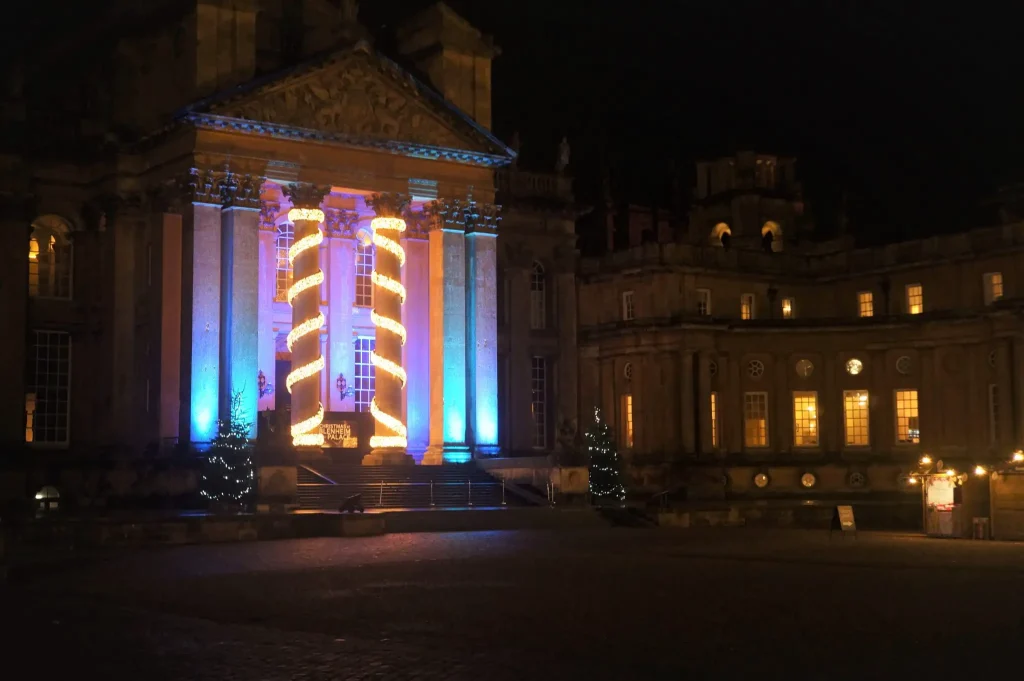
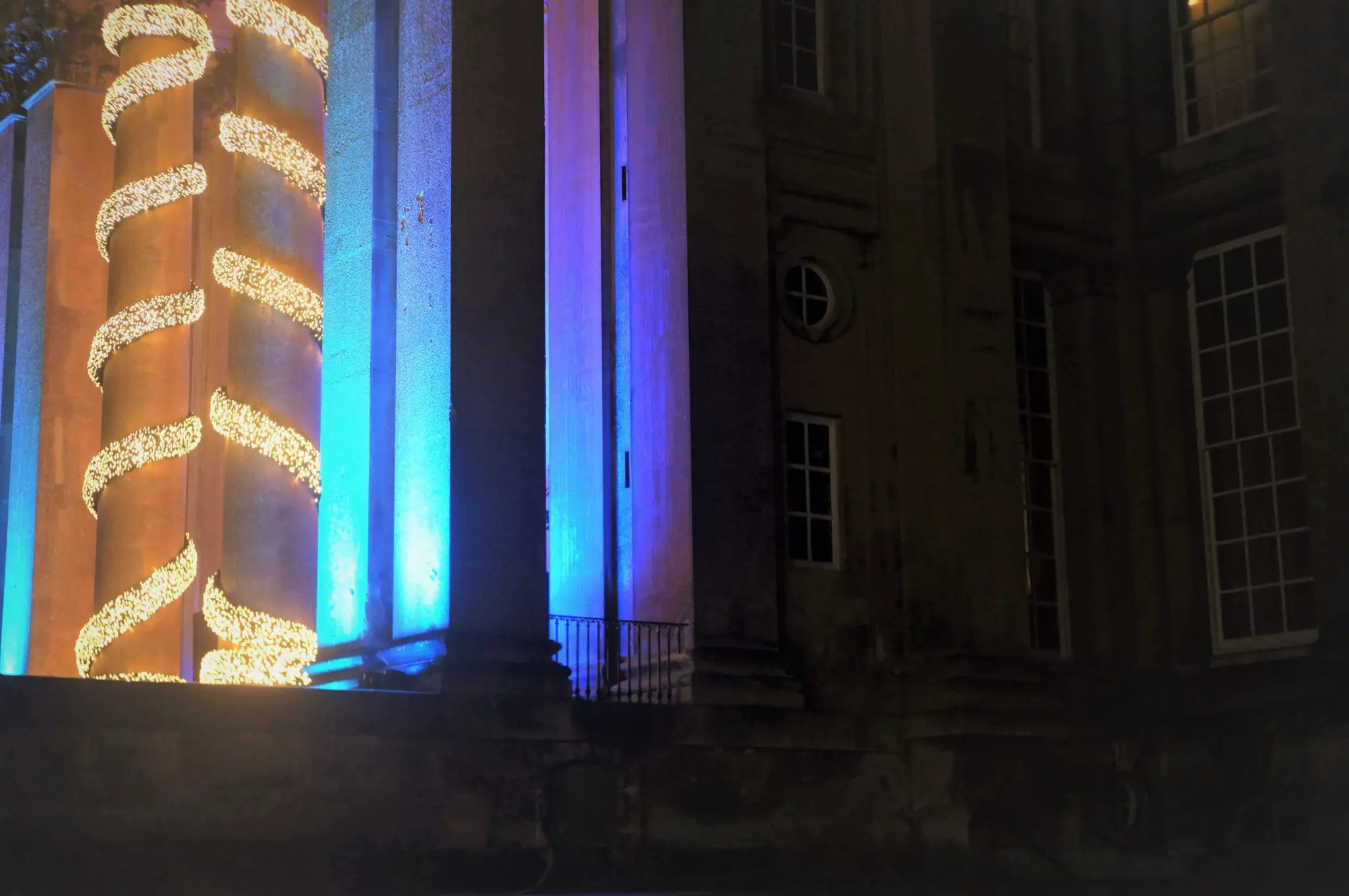

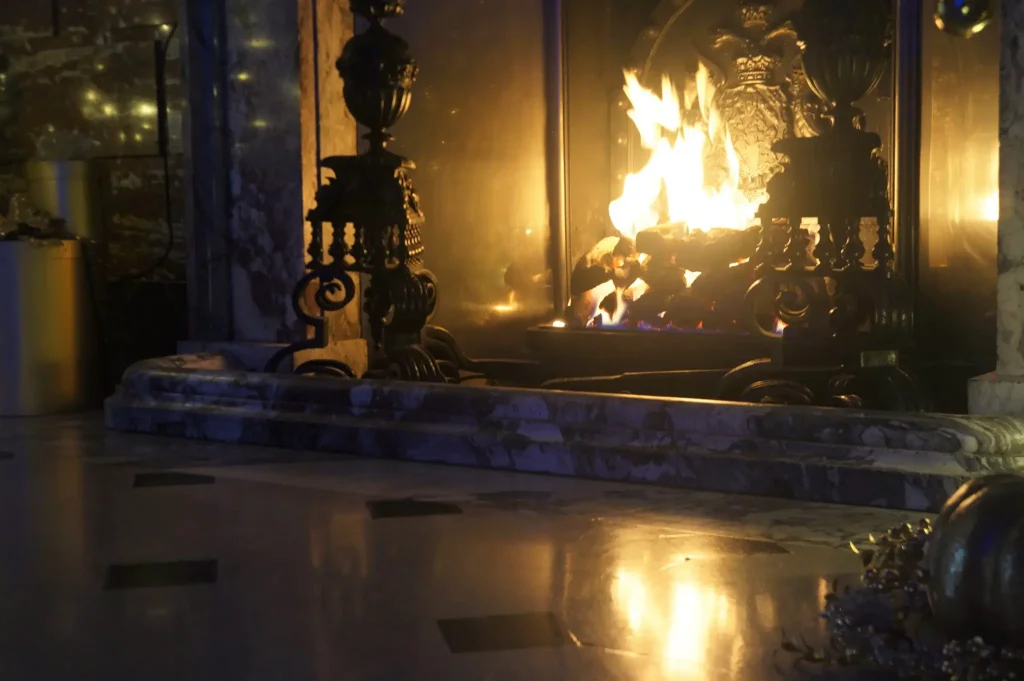
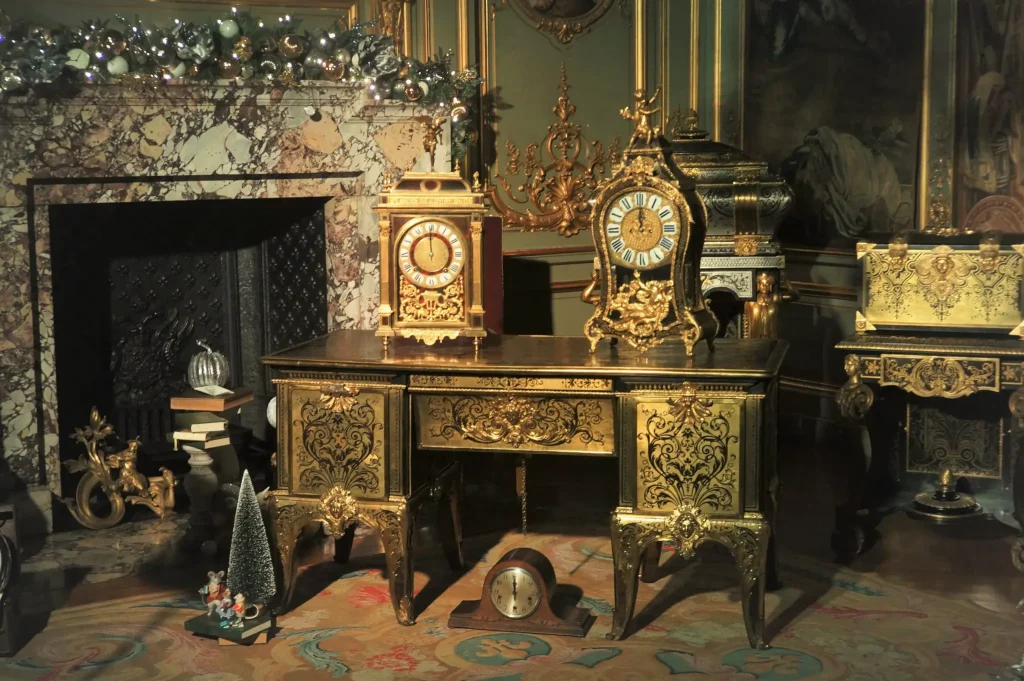

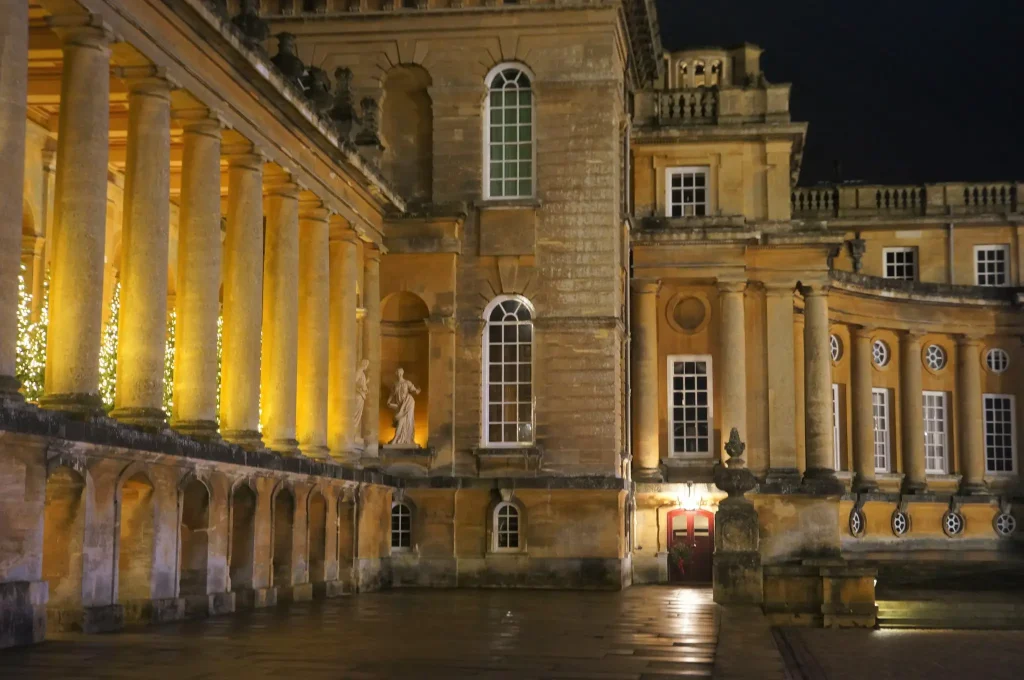
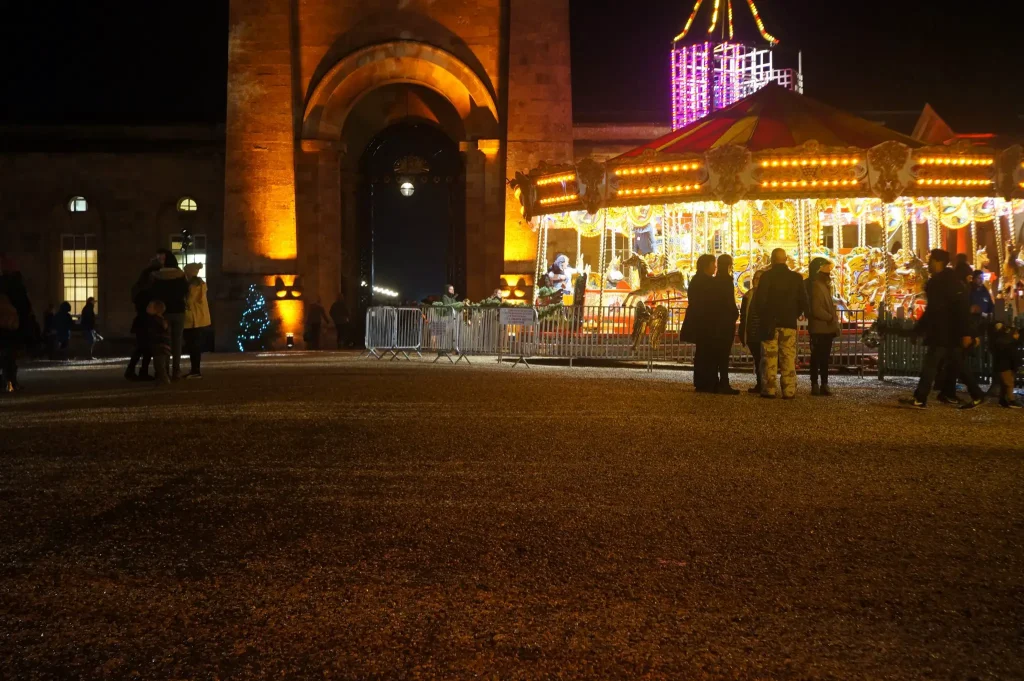
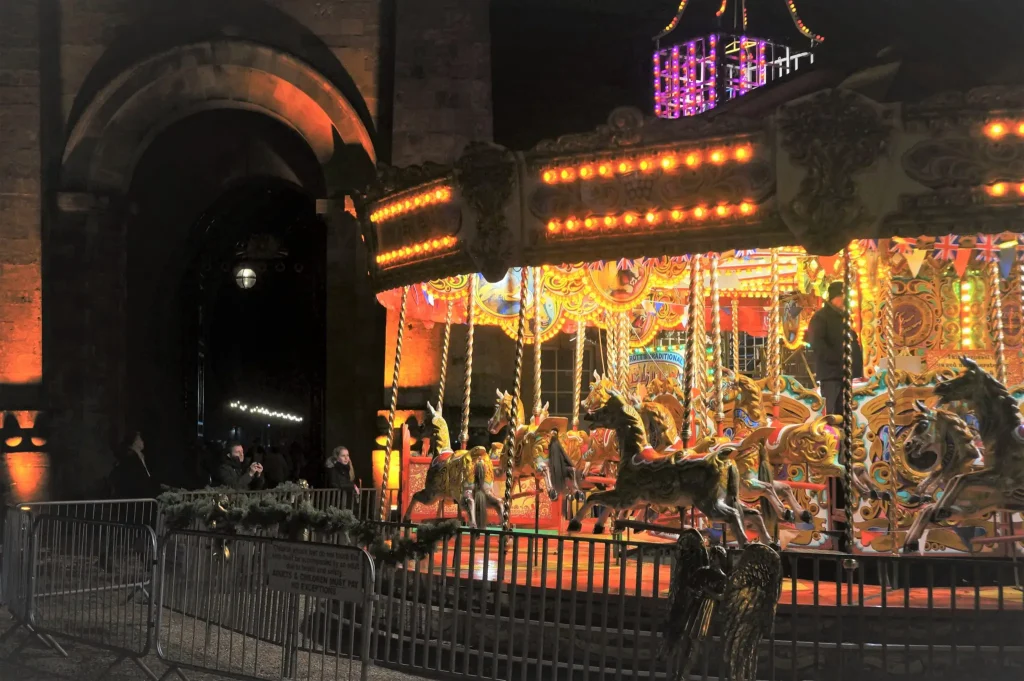
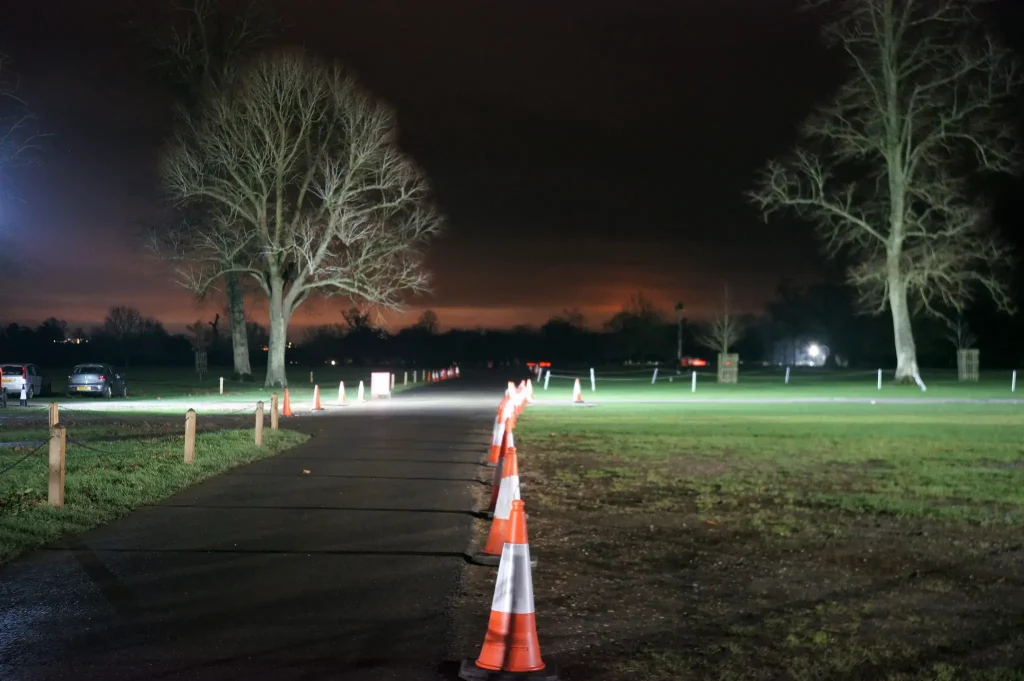
I should add that if the lens hack goes horribly wrong you don’t need to wave goodbye to the original state of your Industar 50-2 because you can keep the two element group assemblies you remove from either side of the central iris mechanism and screw them back in later after pulling out the Nikon lens.
You can find more of the content and reviews I’ve submitted to 35mmc here
Share this post:
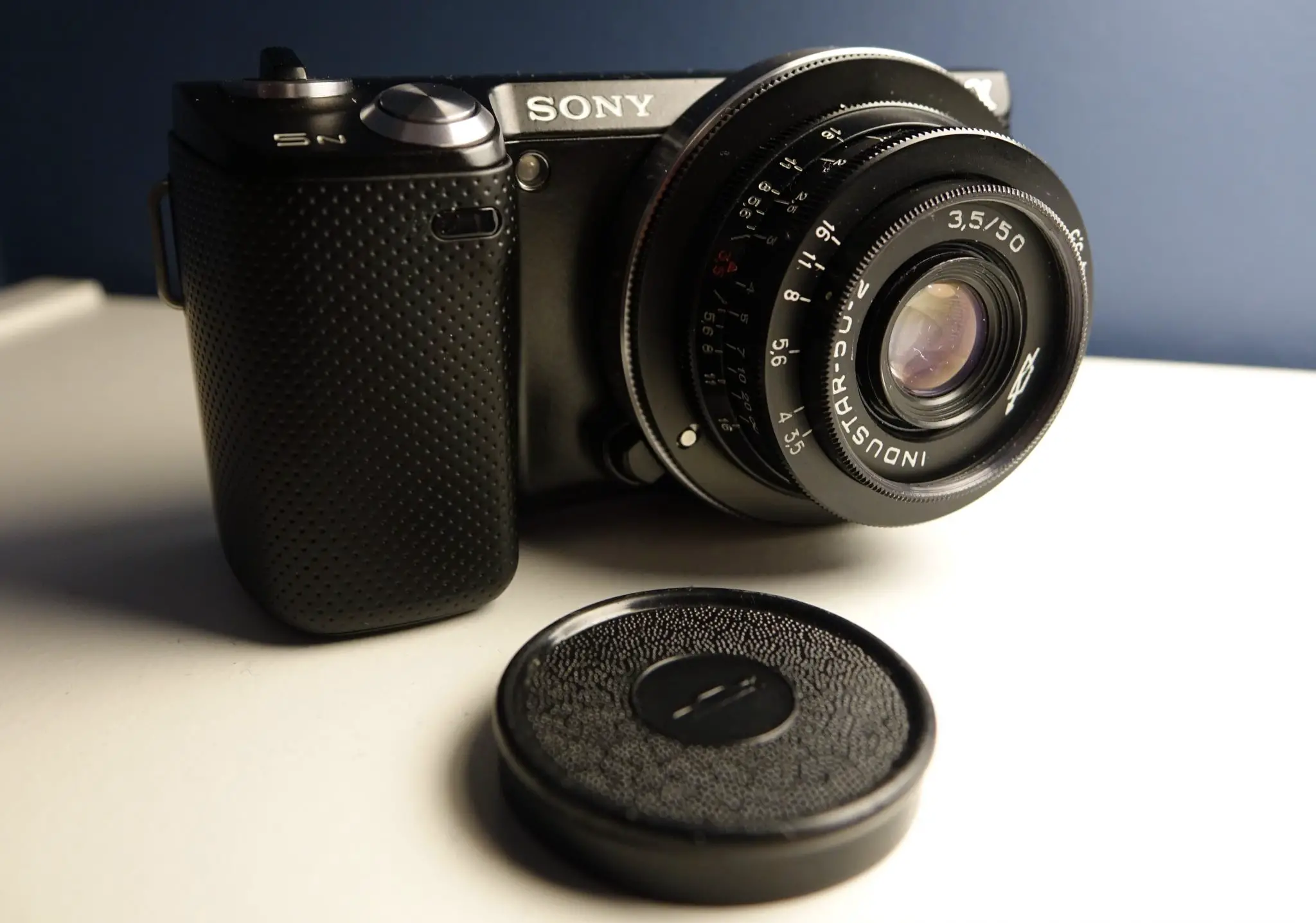








Comments
Flavio Colker on Hacking Nikon L35AF ‘Pikaichi’ lens into the body of an Industar 50-2- by Charles Higham
Comment posted: 28/12/2018
Chris on Hacking Nikon L35AF ‘Pikaichi’ lens into the body of an Industar 50-2- by Charles Higham
Comment posted: 28/12/2018
Comment posted: 28/12/2018
xin Wu on Hacking Nikon L35AF ‘Pikaichi’ lens into the body of an Industar 50-2- by Charles Higham
Comment posted: 28/12/2018
Comment posted: 28/12/2018
Brian on Hacking Nikon L35AF ‘Pikaichi’ lens into the body of an Industar 50-2- by Charles Higham
Comment posted: 29/12/2018
The Contax T Sonnar- that is a 38mm focal length, if I remember correctly. Will be more difficult to RF couple it. A J-12 focus mount might be close enough at 35mm. I mounted a 35mm F2 Wollensak Raptar in one for the Contax- wanted a faster 35mm FL lens for it.
Comment posted: 29/12/2018
Nigel Stanley on Hacking Nikon L35AF ‘Pikaichi’ lens into the body of an Industar 50-2- by Charles Higham
Comment posted: 01/03/2022
Comment posted: 01/03/2022